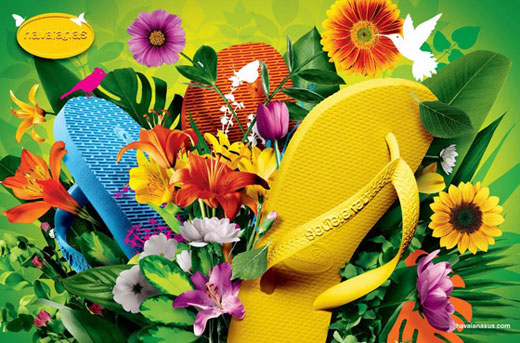Design is sometimes used as synonymous with innovation, creativity, innovation, cutting edge. But how much design is able to bring the new? The society fears and rejects movements that propose radical changes, such as the Landless Movement, hackerism and Punk, but deify changes proposed by design because this changes do not threaten the status quo, but rather reinforce it. That is why design follows trends and can not escape from clichés.
But not everything is cultural reproduction in Design. Although they reject the role of artists, designers do not abdicate authorship. To compete on the market, designers need to draw attention to themselves. They claim the recognition of a personal style, a idiossincratic trace that distinguishes their work from the others. Instead of denying it, astute companies capitalize upon their style, adding it’s qualities to their brand. Throughout this oppening, organizations propose changes and update themselves before the society.Organizations are conservative because their function is to maintain the status quo. They can try to change external entities, but never their own. Therefore, changes comes from the individuals, but it depends on organizations in order to be incorporated as the new status quo.
Designers are not the only people that can propose changes. Actually, consumers has more freedom. They can create and recreate products regardless of organizations interests. Havaianas slippers are a classic case on that. Previously marketed as low cost slippers, it was associated with low-income people, who could not afford buying better shoes.
As a differentiation tactic, some people tipped the sole, leaving the white surface down and the blue one up. This practice got reproduced for many years, until the designer José Marcos da Silva proposed the Havaianas Top, in various colors and without the white surface. Result: absolute sale success and magnificent brand revaluation.

Today, Havaianas slippers are exported to 80 countries around the world and dressed on the highest fashion parades. What was cliche once become a trend, thanks to design. The consumer creativity and innovation has been incorporated into a brilliant and at the same time obvious branding strategy: it is obvious that consumers want different slippers, but it is brilliant how this desire was supplied. TV commercials, points of sale promo and product design were all very well aligned.

Despite the magnitude, the change was not so radical. Low income people are still using blue and white slippers, while the richer wears the colourful. If design had proposed the opposite, or something radically different, neither organization nor consumers would accept it. There is a little animation film called “Wooden Avaiana” that features a child victim of domestic violence. It’s a sarcastic and critical film, but it was perceived by some as an apology for violence.
http://www.youtube.com/watch?v=4gIM3LPyWPo
What is expected of Design, in our society, is precisely the cultural reproduction, the adaptation of products to the needs of organizations and consumers. Being aware of this, designers propose gradual changes. Raymond Loewy, one of the first self-pronounced designer, advertised the paradigm of MAYA – Most Advanced Yet Acceptable. Instead of reproducing, designers – and consumers – can refract: transform the old into new by making small changes.

[…] culture demands innovation, but not every novelty is accepted. Designers must be aware of trends but not stick completely to it. Designer’s role in the society is to update the material culture […]